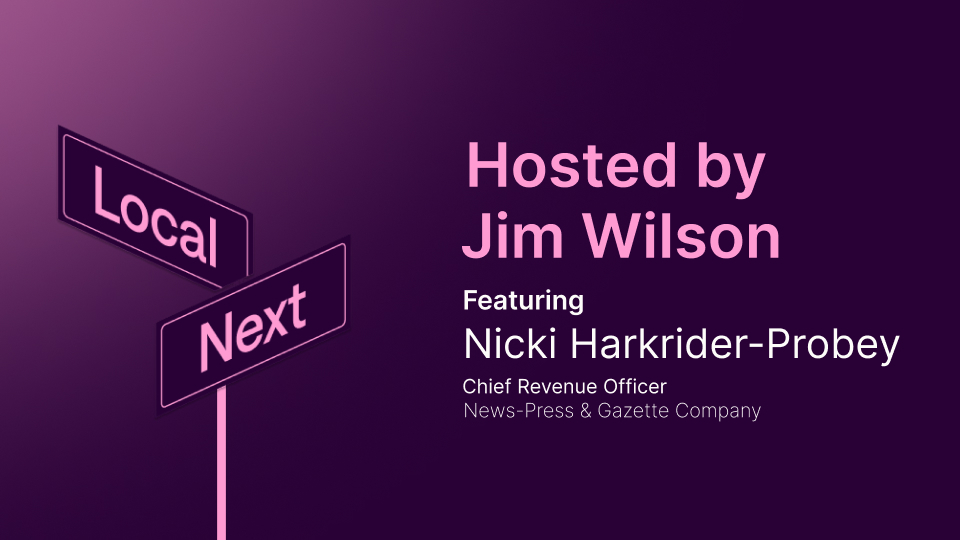Fraud in programmatic advertising is a constantly-evolving issue, and CTV is a prime target for bad actors. At Madhive, we strongly believe that multiple checks need to be in place to make sure advertisers can bid confidently.
So what exactly do advertisers need to be aware of, to avoid feeling the impact of fraud?
For insights, we turned to our partner HUMAN Security, a defense platform with technology to guard the entire user journey.
Madhive's VP of Product Linda Payson sat down with Justin Adler-Swanberg, Director of Product at HUMAN Security, to discuss the ins and outs of CTV fraud.
Linda Payson: Many of our clients are very aware of fraud in the advertising industry, but when it comes to CTV, it's pretty unique. What do advertisers need to be aware of?
Justin Adler-Swanberg: There's no doubt that CTV looks like a modern day gold rush. Advertisers continue to surge their spend, driving CPMs up with limited inventory availability. New environments, streaming business models, and fragmented inventory sources are emerging seemingly daily to keep up with the spend.
This fragmented nature of the CTV ecosystem, coupled with the lack of widely adopted industry standards, creates a breeding ground for fraudsters.
We work on a daily basis with all of our clients and partners to help create an ecosystem that is able to stay a step ahead of the threats. Advertisers should understand that even a small percentage of fraud is hurtful to this growing environment, and they should demand that partners take it seriously — especially considering the incentive that higher CPMs present to fraudsters.
“This fragmented nature of the CTV ecosystem creates a breeding ground for fraudsters. We work on a daily basis to stay a step ahead of the threats.”
Justin Adler-Swanberg
Director of Product, HUMAN
Linda: I think it's important to also point out that fraud in our industry isn't a static thing. People are constantly finding new ways to attack the system. It's something you have to stay on top of, which is of course why we rely on your team.
Justin: You're absolutely right. The fraud landscape, CTV in particular, is an ever-evolving battleground. Fraudsters are constantly innovating new tactics and companies like HUMAN are working tirelessly to stay ahead of those.
“Our team is constantly living in the shadows, uncovering and reverse-engineering the latest threats.”
We see new techniques emerge daily and threats morphing to obfuscate the protections against our detection. HUMAN's Satori Threat Intelligence and Research team is constantly living in the shadows, uncovering and reverse-engineering the latest threats to keep our clients ahead of the curve.
Linda: We work with a wide variety of clients, some of whom are running campaigns for advertisers with small budgets. How can smaller advertisers bid confidently and know that their campaign will reach legitimate audiences?
Justin: For big advertisers, a few percentage points of fraud might be considered a rounding error. But in smaller campaigns, it can be a knockout punch. Every dollar counts no matter how big a budget is, but fraud disproportionately hurts those with tighter budgets, particularly in CTV with its higher CPMs.
“Fraud disproportionately hurts those with tighter budgets, but smaller advertisers can gain the firepower of the big guys by working with a platform that has integrated HUMAN’s fraud prevention tech.”
For smaller advertisers, it's imperative that they connect with partners who are dedicated to the fight and offer strong tools. While HUMAN works directly with multiple brands, many go through our protected-partner Demand Side Platforms, like Madhive.
Tapping into this shared intelligence, smaller advertisers gain the firepower of the big guys. Working with a platform that has integrated HUMAN’s fraud prevention tech is an important step.
Linda: That's exactly why we use HUMAN in the Madhive platform! Can you talk about what actually happens during the fraud protections process?
Justin: We see over 20 trillion interactions each week and we rely on this collective intelligence for every decision we provide, including within CTV environments. As we receive a call from a partner to verify the integrity of an impression, we use a combination of criteria and machine learning models that analyze thousands of data points.
The result, within milliseconds, is a deterministic decision as to whether that impression matches any collection of fraud markers in our detection cloud.
Linda: That multi-layer approach of technology and human monitoring is so important, and something we also adhere to on our side.
So for example, our infrastructure was built for streaming so it allows us to process massive data sets in real time. And we have so much historical data, the platform knows what to look for to identify a valid request.
“A multi-layer approach of technology and human monitoring is so important. The first thing our inventory quality team does every day is review the data from HUMAN, and any flagged sellers that slip through are removed.“
Linda Payson
VP of Product, Madhive
But of course, there's still going to be leakage, so we have an inventory quality team as well to do manual checks. The first thing they do every day is review any flagged seller IDs and remove sources that have an unacceptable invalid traffic rate. They're very stringent about cutting anything suspicious.
We also believe that external certification is an important indication that a platform will be proactive enough to combat fraud. Those industry standards are essential.
Justin: Absolutely, industry standards are an important tool in this fight. Advertisers should be demanding that their partners align with the latest guidance from the industry. HUMAN actively works with industry bodies, such as the IAB Tech Lab, and accreditation bodies, such as the Media Rating Council, to make the industry stronger in this fight.
“The buy-side isn’t flexing its muscle to compel standards adoption quite as much as it could.”
Historically, it's the insistence from buy-side participants like advertisers that has spurred adoption of industry standards. The challenge with CTV is that the high demand and relative scarcity of inventory compared to other inventory types has resulted in the buy-side not flexing its muscle to compel standards adoption quite as much as it could. We may be seeing that begin to change, but more is needed.
Linda: So really, advertisers need to demand more from their tech partners. Obviously, this is a very complex topic that can be tricky for people to wrap their head around. So what's one of the biggest misconceptions you’ve seen about fraud in CTV advertising?
Justin: That it's only a concern for open programmatic buying. Fraudsters are opportunistic and they are trying to target all parts of the CTV environment in search of stealing a piece of the pie. Even seemingly safe, direct deals with publishers can be infiltrated or spoofed.
“No matter where or how you’re buying CTV inventory, it’s essential that you have partners with robust and vigilant approaches to fraud.”
We recently uncovered in our BADBOX/PEACHPIT disruption that the actual devices can be the threat. In this complex scheme, malware was deployed on mobile phones, tablets, and CTV boxes. More than 74,000 off-brand Android devices showed the signs of infection along the supply chain process, originating from repackaging factories in China that enabled an ad fraud botnet module PEACHPIT.
At its peak, PEACHPIT-associated apps appeared on 121,000 Android devices and 159,000 iOS devices in 227 countries and territories. The collection of 39 Android, iOS, and CTV-centric apps impacted by the scheme were installed more than 15 million times before the apps were taken down. So, no matter where or how you’re buying CTV inventory, it’s essential that you have partners with robust and vigilant approaches to fraud.
Linda: Everyone loves to talk about privacy changes in adtech. What effect does that have on CTV fraud?
Justin: Consumer privacy is paramount and we are rightfully seeing more control over digital presences returning to consumers. It does complicate CTV fraud detection though, with fraudsters potentially finding more dark corners to hide. Together, the industry can combat this threat, shine light in these shadows, and ensure the growth of CTV continues safely.
Embracing privacy-friendly standards, working together as an industry and expanding the signals available to services like HUMAN is the path to succeeding against the ever-emerging threats.
“Together, the industry can combat this threat, shine light in these shadows and ensure the growth of CTV continues safely.”
Linda: So to wrap things up, it seems like the universal takeaway is: advertisers should be demanding vigilance and standards from their technology, and the industry as a whole needs to work together to ensure a fraud-free future.
Justin: Exactly!



%201.jpg)











